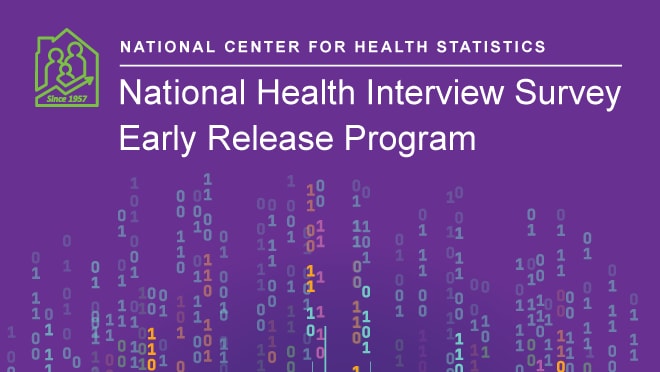What to know
- The National Health Interview Survey (NHIS) Early Release Program provides timely access to select survey data ahead of their final release.
- The Early Release Program provides data about health insurance coverage, wireless substitution, and several important health measures.
- Access these data in tables, interactive data query systems, reports, and data files.

Overview
The National Health Interview Survey (NHIS) Early Release program provides preliminary data much sooner than the final NHIS data files are ready for release. Preliminary estimates are available for insurance coverage, wireless phone substitution, and additional important health measures (key health indicators). Preliminary files of data at the individual participant level (microdata) on these topics are also available.
Recent Early Release reports
Key health indicators
- Interactive Quarterly Estimates from the National Health Interview Survey, January 2019–June 2024 (11/08/2024)
- Interactive Biannual Estimates from the National Health Interview Survey, January 2019–June 2024 (11/08/2024)
Health insurance coverage
Interactive Data Query System
- Biannual Estimates for the Total US Adult Population with a Focus on Demographic Subgroups
- Biannual estimates include estimates for some demographic characteristics, like sex, age group, and Hispanic origina and race
- Biannual estimates include estimates for some demographic characteristics, like sex, age group, and Hispanic origina and race
- Quarterly Estimates for the Total US Adult Population
Preliminary microdata files, January-June 2024
Restricted data
Questionnaire changes
NHIS launched a redesigned questionnaire in 2019. Following this redesign, some Early Release indicators have changed. Thus, the contents of preliminary microdata files from 2019 and later years are different from previous versions.
Preliminary microdata files are available for adults and children. The Early Release program includes two files for both groups—
- Information on wireless substitution
- Information on key health indicators and health insurance coverage
When data are available for both adults and children, you can join the adult file and child file together to calculate age estimates.
